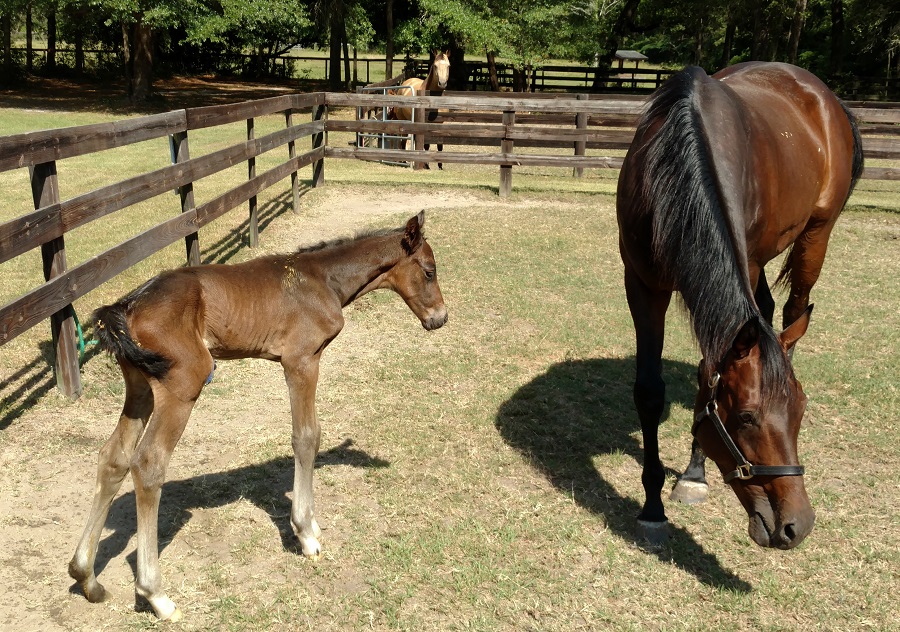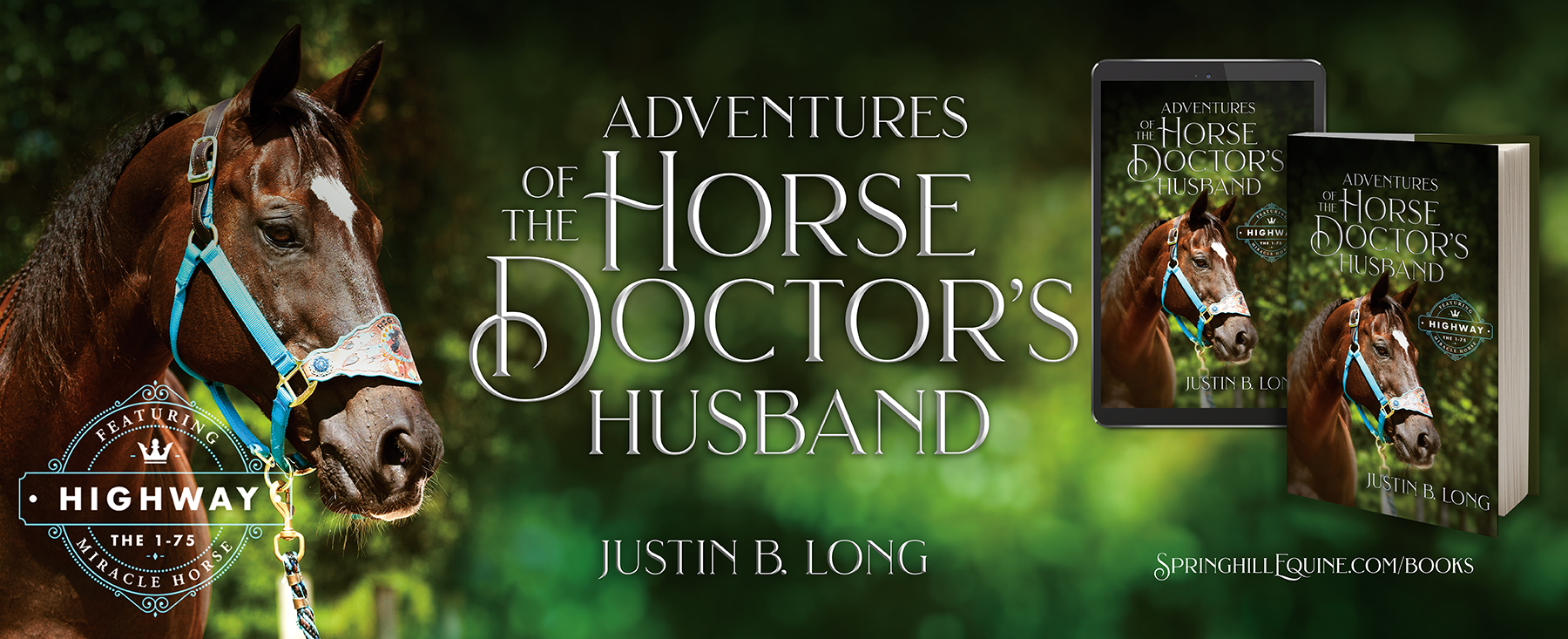Tuesdays with Tony
Well, it seems the weather is getting colder and the days are getting shorter. While for most of you this probably conjures up thoughts of fat Thanksgiving turkeys, glowing Christmas trees, and cozy winter clothes, it reminds me that breeding season is right around the corner! Now is the time to start thinking and preparing if you are planning to breed your mare this year. If you are on the fence about breeding, here are Tony’s Top Three things you will need to have if you want to create your own custom foal:
A fertile mare with several unique, redeemable qualities
Let’s break this down a bit. A fertile mare is one who is relatively young and ideally has a proven history of successfully delivering foals in the recent past. A mare’s fertility drops off steadily and rapidly after 8 years of age. By far the most challenging horse to get pregnant is an older maiden mare (i.e. a horse who has never carried a foal before). She needs to have normal external and internal reproductive organs. Her uterus needs to be free from infection, inflammation, and scar tissue. She should be negative for metabolic conditions such as Cushing’s disease and insulin resistance.
Another point to consider is whether or not your particular mare’s genetics are special enough to warrant being passed on to another generation. There is an equine overpopulation problem in the United States, and as such we must be sure we are breeding horses responsibly or not at all. If you want to breed simply because you want a young horse, you are much more likely to find what you are looking for if you purchase one than if you try to make your own. For example, you can choose which color you want, what personality type you like, and you can evaluate the horse’s skill and future performance potential prior to purchase. With breeding, there are no guarantees in any of these categories.
There is a widespread misconception that a stallion is going to “fix” what you don’t like about your mare. Just…no. That’s not how genetics work. As a matter of fact, genetic traits are passed on in a one-or-the-other fashion. This means that if you breed a mare with bad feet to a stallion with good feet, you have a 50% chance of getting a baby with bad feet, and a 50% chance of getting a baby with good feet. Keep in mind, this is my very oversimplified feline explanation of a very complex topic.
A lot of money
Let me just tell you upfront, from one frugal guy to another, the more you try to cut corners in this breeding thing, the more it will end up costing you. For example, if you have 2 mares, you may think you can flush an embryo out of one, and the other will be the surrogate…thus eliminating the need to ‘rent’ a recipient mare. False… or at least extremely unlikely and ill-advised. Embryo transfer is an advanced, complicated, delicate, and expensive process. The greatest expense in maintaining an embryo transfer program lies in maintaining a herd of at least ~50-100 recipient mares. Do you know why they have 50-100 recip mares? It’s so they can pick the one mare whose cycle matches up perfectly with your donor mare, so that the delicate embryo transfer process is successful. You may read that there are ways to synchronize the cycles of 2 mares. However, these protocols are not an exact science, and they require hormonal manipulation which never works as well as allowing things to happen naturally. There is a higher risk of the embryo transfer failing, and the next thing you know, you are out $2000 and you don’t have a baby on the way.
Having just read that bit about embryo transfer, you may be thinking that sounds expensive, but you are going to find a way to do it cheaper. I can assure you, you will not. If you want to breed your own mare and raise your own foal, you need to be prepared to invest thousands of dollars in the process. Which begs the question: would it be cheaper to just buy a horse? And the answer is usually ‘yes.’
Consider the fact that you will have the costs of breeding on the mare end (pre-breeding screening tests, ultrasounds, artificial insemination, etc.), the costs of the stud fee (factor in 1-3 collection fees, too), the costs of pregnant mare care (ultrasounds, vaccines, foal watch). Then, once the foal is born, you still have to get it to survive it’s first 3-4 years of life or so before you sell it. That means 3-4 years of feeding, housing, preventive care, emergencies (baby horses LOVE to hurt themselves), training, etc. Add all that up. Go ahead, I’ll wait. I have hours until my Friskies is served.

A lot of time and patience
It is widely known that humans sometimes have to try for awhile before they get pregnant. But did you know that the same is true for horses? A normal, healthy, young, fertile mare (see definition above) has approximately a 30% chance of conceiving each time she is bred. This means that you should plan on breeding your mare 3 times, over 3 heat cycles, before you can count on her getting pregnant. This means that even if you start trying to breed your mare on February 1st, you may not have a confirmed pregnant horse until mid-April. Then begins the waiting…
A horse’s gestation is around 11 months on average, but it is not unusual for them to carry over a year. So by the time the foal is born, you have already invested almost a year and a half in creating this perfect little once-in-a-lifetime horse.
-Tony
P.S. My humans have two podcast episodes on breeding, if you’re looking for more knowledge about this. Go to Straight from the Horse Doctor’s Mouth and scroll down the playlist. I think both episodes are back in season 1. If you’re really going to breed, it’s worth an hour of your time to gather all the knowledge available, right?
Tuesdays with Tony is the official blog of Tony the Clinic Cat at Springhill Equine Veterinary Clinic in Newberry, Florida. If you liked this blog, please subscribe below, and share it with your friends on social media! For more information, please call us at (352) 472-1620, visit our website at SpringhillEquine.com, or follow us on Facebook!
[jetpack_subscription_form title="Tuesdays with Tony"]

